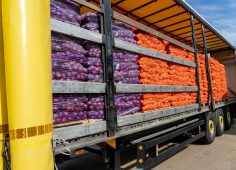When Risks Evolve: How to Manage Emerging Foodborne Pathogens
By Richard Onley
Most food businesses have longstanding strategies in place to monitor and manage microbiological safety. Yet food safety risks are continually evolving, so it’s important to keep up-to-date and adapt established measures when necessary.
One area of concern is emerging foodborne pathogens. These can be defined either as newly identified pathogens or those which are already well documented but experiencing a surge in reported numbers or geographic distribution. Any business involved in the production or distribution of food products, ingredients, or raw materials needs to be alert to the risks emerging pathogens may pose. What’s more, since it’s not always possible for food safety legislation to keep pace with dynamic threats, a proactive approach to the identification and management of emerging risks is critical.
Since it’s not always possible for food safety legislation to keep pace with dynamic threats, a proactive approach to the identification and management of emerging risks is critical.
Three foodborne pathogens to watch
At present, emerging foodborne pathogens include Escherichia coli O157:H7, Vibrio vulnificus and Arcobacter. All three cause gastroenteric illness, and they are zoonotic, meaning they cause infection in animals and humans, and can pass from animals to humans. A marked upward trend in cases puts E. coli O157:H7 and V. vulnificus in the ‘emerging’ category although they are more widely known than Arcobacter. So, how prevalent are they, and how should food businesses respond?
Escherichia coli O157:H7
Of the various strains of E. coli, one of the most potent is E. coli O157:H7 which can cause infection after the ingestion of just ten bacterial cells. Figures from the European Centre for Disease Prevention and Control (ECDC) indicate a significant upturn in confirmed cases between 2012 and 2019 when cases rose to 8,339 (an increase of more than 2,500). The number of annual cases was lower during the pandemic, but is expected to increase once more.

Ruminant animals, especially cattle, have been traced as the natural reservoir for this bacterium and undercooked beef is a leading source of infection in humans. However, several outbreaks investigated by the US Centers for Disease Control and Prevention in 2021 and 2022 were linked to packaged salads and baby spinach.
Infections result in acute watery diarrhoea, which is often bloody due to the Shiga toxin which causes loss of intestinal mucosa cells. Whilst the infection is self-limiting in 85% of cases, the remaining 15% will develop further complications such as haemolytic-uremic syndrome which can lead to multiple organ failure and death. Many patients within this 15% are children.
Vibrio vulnificus
V. vulnificus is one of several species of Vibrio bacteria found in seawater. It has been isolated from seafood in diverse climatic zones around the world including Denmark, Spain, India, Thailand, Japan and the US. As oysters are usually consumed raw, they are the most common vector for human infection.
Reports of Vibrio infections rose by 78% in the US between 1996 and 2006 with approximately 100 cases of V. vulnificus reported annually. More recently, Florida’s Department of Health recorded 74 confirmed cases of V. vulnificus and 17 deaths in 2022 (although this was considered an abnormal increase, exacerbated by the impact of Hurricane Ian).
Cases are rising elsewhere too, often linked to heatwaves as warmer sea temperatures allow the bacterium to replicate more easily. The pathogen can survive in water temperatures of 9-31°C, with >18°C being optimum.
Although the number of annual cases is significantly lower than those associated with E. coli O157:H7, the seriousness of infection makes it a concern. According to the ECDC, the mortality rate is one in five, with people suffering from liver disease or weakened immune systems most at risk.
Arcobacter
The Arcobacter genus was established in 1991, and since then strains have been isolated from a wide range of sources including meat, fish, drinking water, and plant-based foods. It belongs to the family Campylobacteraceae but is distinguishable from Campylobacter as it can grow in aerobic conditions and at 15-30°C, whereas Campylobacter species favour microaerophilic conditions above 30°C.
Arcobacter is a global issue, with various strains reported in the US, Italy, Spain, Australia, and Japan. To date, 33 strains have been found, including A. butzleri, A. cryaerophilus and A. skirrowii.
A. butzleri is most commonly associated with infection in humans and animals. Infected individuals usually present with common gastrointestinal symptoms, but cases of bacteraemia, septicaemia, peritonitis, and endocarditis have also been recorded.
Responding to the threat
E. coli is already included on the laboratory testing schedules of many food businesses. However, with the increasing number of cases and the reputational damage associated with outbreaks, there could be a case for increasing the frequency of testing, or investing in more sophisticated detection methods. Technologies offering rapid and reliable identification of pathogens, such as next generation sequencing (NGS) and droplet digital Polymerase Chain Reaction (ddPCR), are worth consideration.
Businesses that handle seafood would be well advised to routinely screen for Vibrio species (which should detect V. vulnificus). As more parts of the world experience hotter summers, and therefore warmer sea temperatures, the risks posed by this pathogen could quietly increase with devastating consequences. Similarly, Arcobacter is steadily becoming a serious threat to food safety with its near ubiquitous presence in the environment and rising reports of detection.
Regular consideration should be given to emerging foodborne pathogens during ongoing Hazard Analysis and Critical Control Point (HACCP) activity. The onus is on food businesses to develop an intelligent and proportionate response to emerging threats. A proactive approach to horizon scanning is the best way to continually search for and assess emerging and evolving threats to food safety.
Stay ahead with the latest in Food Safety! Free subscription, unlimited access. Sign up now!
About the author:
With an academic background in microbiology, Richard Onley has worked as a scientist at Leatherhead Food Research for more than ten years. The company provides scientific, regulatory, and food safety advice to the global food and beverage industry. Richard is a Principal Scientist supporting the food safety and quality team.

-
 FeaturedSupply Chain Management
Building a Safer Food System with Smart Supply Chain Strategies
FeaturedSupply Chain Management
Building a Safer Food System with Smart Supply Chain Strategies
-
 FeaturedSupply Chain Management
Driving Food Safety: The Role of Transportation Management Systems
FeaturedSupply Chain Management
Driving Food Safety: The Role of Transportation Management Systems
- Podcast How Blockchain is Transforming the Food Industry: Perspectives from Ali Asgar Abbas, Co-Founder of ProofEasy
-
 FeaturedFood Safety
The Realities of IPM: Challenges and Solutions for Pest Prevention in Food Safety
FeaturedFood Safety
The Realities of IPM: Challenges and Solutions for Pest Prevention in Food Safety
- Podcast How Advanced Inspection Technology Can Transform Food Safety: Perspectives from Kye Luker
-
 FeaturedPublic Health
The Silent Invader: Uncovering H. pylori and Its Harmful Risks, Including Foodborne Illness
FeaturedPublic Health
The Silent Invader: Uncovering H. pylori and Its Harmful Risks, Including Foodborne Illness




